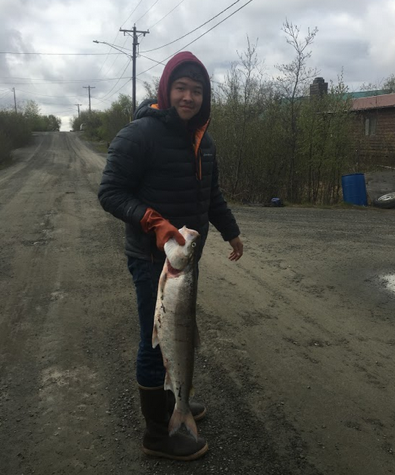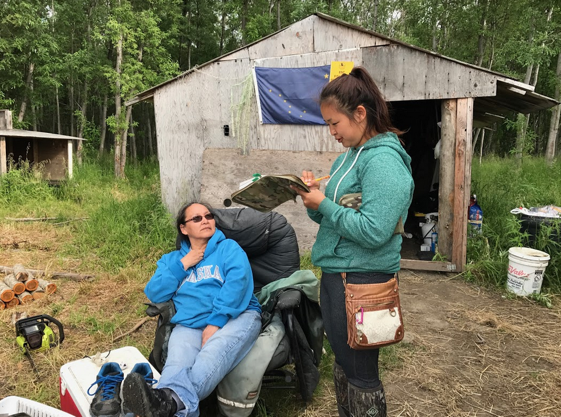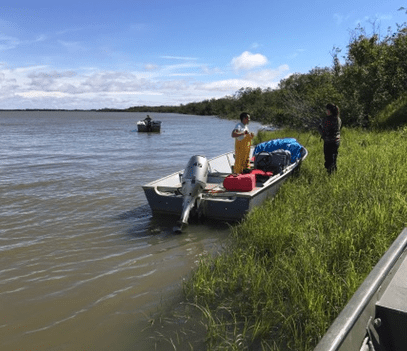
Avery Hoffman, Orutsararmiut Native Council Summer Youth Representative, conducts harvest surveys at Bethel area fish camps and attempts to recruit local fishermen to participate in the Chinook Salmon Age-Sex-Length Sampling Program. Here, Avery is showing a subsistence sampler how to properly sample his subsistence-caught Chinook.
Community-Based Monitoring: Using Participatory Modeling to Empower Community Engagement in Salmon Science
Trust is central to successful implementation of fisheries management decisions in Western Alaska. A Kuskokwim River citizen science effort is ongoing to empower communities to collect their own information and provide it to tribal, state, and federal managers. The information gathered guides decisions about when to allow or restrict fishing. This two-way exchange of information is intended to build mutual respect and trust, leading to better, and less controversial decisions.
Community-Based Monitoring (CBM) is increasingly contributing to the management of natural resources in rural Alaska. There are two dimensions to our story of CMB on the Kuskokwim River. The first is more technical: how do we define the most valuable information needed for guiding wise and sustainable management of subsistence fisheries? The second is more social: how do we build relationships that engender mutual respect and trust between the community and fishery managers on a foundation of information collection?
To address both of these issues, we identified intersections between fisheries managers seeking information for better decision making, and the capacity of stakeholders to monitor information from within their own communities. We incorporated community-sourced information into decision-making models to better inform fish harvest decisions, also support the exchange of knowledge between two world views of salmon management.




